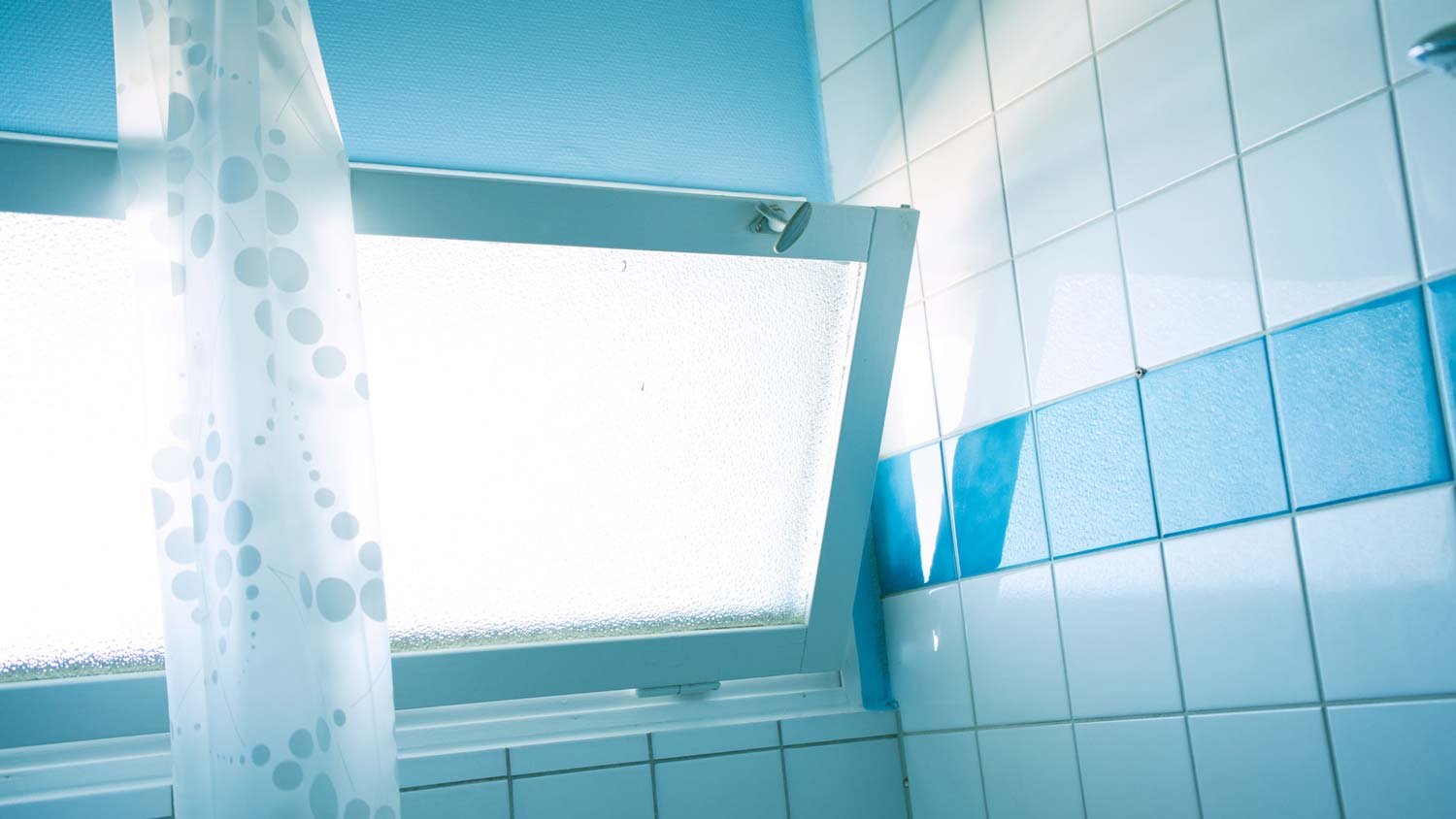What Is a Hopper Window and Is It Right for Your Home?
Add light and airflow without sacrificing privacy and security


Hopper windows are a type of window that opens inward.
They’re often installed up high, near the ceiling.
Hopper windows are most commonly found in basements, bathrooms, and kitchens.
They can provide you with extra privacy thanks to their unique design.
With so many different types of windows available, choosing the right one for your home can be a challenge. Hopper windows are one style that you might not be familiar with, but they’re worth considering if you want to add light and ventilation in a basement, bathroom, or kitchen. Find out everything you need to know about these windows, their pros and cons, and if they’re right for your home.
What Are Hopper Windows?
Hopper windows are rectangular-shaped, single-hung windows that open inward into your home. They’re latched at either the top or bottom of the frame, with the hinges of the window on the opposite side. When the hopper window is opened, the pane of glass leans inward into the interior at about a 45- to 90-degree angle. In this way, they resemble a hopper (a bulk pyramid/cone-like container that tapers downward), which is how they got their catchy name.
These windows are popular and versatile, and they can be used in almost any type of home.
Hopper-style windows are often the ones chosen for small spaces, especially in basements where they can be located up high near a ceiling. They provide much-needed ventilation and sunlight without requiring a lot of wall space to install.

Hopper vs. Awning Window
At first glance, hopper windows and awning windows seem very similar, but there are a few key differences. First, awning windows are always hinged at the top and open outward, creating an “awning” with the open glass that protects against rain and reflects some direct sunlight. Hopper windows, on the other hand, can be hinged at either the top or bottom and open inward.
These windows also have something important in common: they usually can’t be used as egress windows in case of an emergency because of their smaller size and the fact that they don’t fully open. Both of these window styles are often installed in basements, but most building codes don’t allow them to be used as points of egress, so you’ll need to have another type of window installed in addition to a hopper or awning window.
Pros and Cons of Hopper Windows
Hopper windows are a great choice to add light and ventilation to basements, bathrooms, and kitchens due to their small size. There are a few things to consider before buying a new window that’ll help you decide if a hopper window is the right choice for your home. Let’s explore some of the benefits and drawbacks.
Pros
Ventilation
You can leave a hopper window open and be sure that it will ventilate your space thanks to its simple yet powerful design. Plus, since hot air rises (and, as you’ll remember, hopper windows are typically placed close to the ceiling), having a hopper window is a great way to release some extra heat from the home.
Energy Efficiency
Replacing windows is a great way to make your home more energy efficient. Hopper windows are a safe bet for keeping temperatures stable thanks to their airtight seal. They can help you maintain your desired room temperature even when it gets extreme outside.
Small-Space Friendly
There are a lot of places in your home where you’d probably like to have light and air, but you might not be able to install a full-size standard window there. Let hopper windows be your solution, thanks to their compact design and range of sizes.
Safety
Don’t worry; a hopper window doesn’t open wide enough for a human to get through. Most models don’t even open to a 90-degree angle, which would likely be the size required for someone to fit through. You can enjoy the fresh air without having to worry about threats to the safety of your home.
Ease of Cleaning
It’s remarkably easy to clean a hopper window because it takes very little lifting at all to get to either side of it. Just open it up, reach around with your cloth, cleaner, or paper towel, and wipe it down. Since many people place hopper windows closer to the ceiling, they may require a step ladder to get up to—that’s something to think about before installing.
Privacy
Hopper windows aren’t just useful in basements. They can be installed anywhere you’d want to add the perks of a window without sacrificing your personal comfort and privacy, like a bathroom or changing room. Choose frosted glass for the window pane, or apply a store-bought frosted glass film if you’d rather DIY it.
Cons

Limited Size Range
Hopper window sizes are fairly limited and run on the small size, so if you’re looking to install a window for a larger space, this probably isn’t it. That said, they can be installed as a complement to a larger window, as many contractors and DIYers tend to place them along the bottom or top of a large picture window.
Take Up Interior Space
Since your hopper window is going to swing inward into your space, you need to make sure there’s room to accommodate it. That’s why they’re often installed close to the ceiling rather than alongside a hallway or high-traffic area where you’d need to avoid bumping into them.
Could Let Rain In
Hopper windows can let rain in if there’s enough wind to push droplets beyond the window’s edge into your home. This could mean a water-damaged floor if you’re not careful.
Hard to Reach
Having a window near the top of the wall near a ceiling is great for keeping it out of the way, but it’s also a little tougher to get to when you want to open, close, or clean the window. Make sure that you know whether or not you’ll need a step ladder to get up to your hopper window before buying so that you can plan for those scenarios.
The Best Rooms for Hopper Windows
Thanks to their inward-opening design, the best placement for these windows is in rooms where you’d want to enjoy the benefits of sunlight, energy efficiency, and ventilation without necessarily allowing people to see into your open window. That makes them perfect for basements, bathrooms, laundry rooms, children’s rooms, or even for adding in a kitchen window. If you want an extra layer of protection and safety, you can opt for a frosted glass pane that blocks anyone outside from being able to see in. You can also buy some frosted glass film and apply it yourself.
Should You Consider a Hopper Window for Your Home?
It’s always beneficial to expand the amount of sunlight in your home through your windows. It boosts both your quality of life and property value if you’re an owner. However, the cost of enlarging windows can be higher than some budgets, and hopper windows could be a great workaround to get the job done without overspending on the cost of window replacement. Luckily, hopper windows are pretty cost-effective, thanks to their compact design.
Ultimately, it all depends on what your priorities are in the space and whether it makes sense to install a window that opens inward. Now that you know what a hopper window is, the next step would be to get the opinion of a local window contractor. That way, you can ask questions and narrow down what’s going to look best, provide the most benefits, and fit your budget.
Sophie Yalkezian contributed to this piece.
Frequently Asked Questions
Hopper windows aren’t flawless when it comes to keeping rain and debris out of your house because if there’s wind pushing the precipitation, it could easily get in through the open space. On top of that, hopper windows aren’t potential escape routes the way regular windows are in case of a fire or emergency. If that’s a priority or need, it’s something to consider when choosing a window type.
Awning windows are just like hopper windows except that they open the opposite way. Instead of opening inward, awning windows open outward with a hinge at the top. This creates a mini-awning within your window frame, which is where the name comes from. Hopper windows, on the other hand, open inward with a hinge at the bottom.
On average, replacing your windows can cost anywhere from $180 to $410, which breaks down to an average of $280 per window. It all depends on the size of the window you’re installing and the frame and glass that you choose. Other things a contractor might take into consideration are the age of your home, the condition of the walls, and where you’re installing the windows.





- Everything You Need to Know About Hopper Window Sizes
- 15 Types of Windows and How to Choose the Right Ones
- Standard Window Sizes: A Complete Guide to Understanding Window Dimensions
- What Are Awning Windows and Are They Right for Your Home?
- 14 Things to Consider Before Buying Windows
- 10 Tips for Planning Window Placement
- 10 Stylish Types of Kitchen Windows to Brighten Up Your Cooking Space
- 10 Tips on How to Make Windows More Energy Efficient
- When to Replace Windows: 10 Signs That It’s Time to Start Shopping
- How Long Do Windows Last and When Should You Replace Your Windows?










